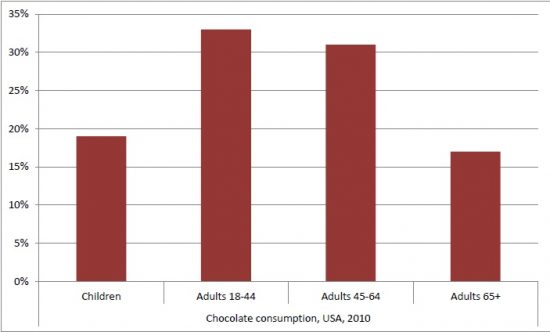U.S. Surgeon General Calls Vaping “Major Public Health Concern”
With tobacco smoking killing 1 in 2 smokers, many reputed health professional see vaping as a benefit for public health, but according to U.S. Surgeon Genral Vivek H. Murthy they are a “major public health concern” that has to be treated the same as any other tobacco product.
 In a report released last Thursday, Murthy repeatedly refers to vaping as “a form of tobacco use”, conveniently failing to mention that there is no tobacco in electronic cigarettes or in e-liquid. He is obviously going by the legal definition of tobacco products, which includes products containing any ingredient derived from tobacco, in this case nicotine. By this logic, nicotine-containing patches, gum and sprays are also tobacco products, only they are legally categorized as medicinal nicotine replacement therapies (NRT), so the harms associated with tobacco products don’t apply to them. Yet the nicotine in these medical products is the same as the one in e-cigarettes, so why isn’t the Surgeon General warning people about the potential health hazards of nicotine replacement therapies? Obviously that would be very misleading, as they are NOT tobacco products, but neither are electronic cigarettes!
In a report released last Thursday, Murthy repeatedly refers to vaping as “a form of tobacco use”, conveniently failing to mention that there is no tobacco in electronic cigarettes or in e-liquid. He is obviously going by the legal definition of tobacco products, which includes products containing any ingredient derived from tobacco, in this case nicotine. By this logic, nicotine-containing patches, gum and sprays are also tobacco products, only they are legally categorized as medicinal nicotine replacement therapies (NRT), so the harms associated with tobacco products don’t apply to them. Yet the nicotine in these medical products is the same as the one in e-cigarettes, so why isn’t the Surgeon General warning people about the potential health hazards of nicotine replacement therapies? Obviously that would be very misleading, as they are NOT tobacco products, but neither are electronic cigarettes!
What we have here is a double standard. Murthy wouldn’t directly say that NRT is a form of tobacco use, but he has no problem saying that about e-cigarettes, even though the only thing linking them to tobacco is the nicotine. They are smoke-free and tobacco-free, yet he makes a point of constantly referring to them as tobacco products. If that is not is not deceiving, I don’t know what is.
The Surgeon General’s report is also filled with outrageous health claims related to e-cigarette use – supported by no real scientific evidence – and concludes that they “are not harmless”. Who ever said they were?!? I thought public health was about minimizing health risks, not wiping out anything that is not 100% safe. As Dr. Konstantinos Farsalinos, who analyzed the report on his website, says “In all the statements related to e-cigarettes and harm, you can easily substitute the term “e-cigarette” with terms like “human breath” (it does emit potentially harmful aldehydes), “indoor air” (you are probably exposed to more formaldehyde by just staying at home compared to vaping), “walking on the streets”, “medications” (I am not aware of any medication without side effects or any medical intervention without potential complications), or anything you can imagine.”
The bottom line is that electronic cigarettes are not completely harmless. E-liquid does contain some substances that degrade into compounds that could cause health problems with long term use. We don’t know yet. But what we do know is that the levels of these harmful substances are orders of magnitude lower in e-cigarette vapor that they are in cigarette smoke. If Murthy would have focused on these facts instead of desperately trying to convince people that vaping is a form of tobacco use and should be treated the same as smoking, nobody could have blamed him of lying. As things stand, though…
The Surgeon General’s report even includes a section entitled “Perceived Harm of E-Cigarettes”, in which it is suggested that it is inappropriate for people to think of e-cigarettes as less harmful than smoking. But dozens of scientists and health professionals have reached that exact conclusion through research. Should we just ignore their results and trust a report that doesn’t actually offer any scientific arguments for its conclusions? Should we perceive vaping as just as harmful as smoking, because if that is the case, there is no reason vapers shouldn’t just go back to smoking tobacco, right?
Murthy also states that “prices of e-cigarette products are inversely related to sales volume: as prices have declined, sales have sharply increased,” through which he is basically suggesting that states need to tax vaping products the same as tobacco, to make them less accessible. That sounds swell. They contain no tobacco, offer people a more affordable alternative to smoking, so far have no proven associated health risks, so let’s just tax them just like tobacco cigarettes.
But ultimately, the Surgeon General’s report is about e-cigarette use and youth. “These products are now the most commonly used form of tobacco among youth in the United States, surpassing conventional tobacco products, including cigarettes, cigars, chewing tobacco and hookahs,” Murthy writes. “As surgeon general and as a new father, I am urging all parents to take a stand against e-cigarette use by our nation’s young people.”
That makes vaping sound like a plague among youth, doesn’t it? But again, the Surgeon General fails to mention that while the rate of vaping among young people has grown in the last few years, the number of smoking youths has also gone down significantly. Is there are any chance that the two are related? Could kids that were already smoking have switched to vaping as a less hazardous and more enticing nicotine delivery method? There is no evidence that they were non-smokers when they started using e-cigs, and the correlation between the growing number of young vapers and declining smokers sounds like one hell of a coincidence.
To be clear, the best scenario would be for youth not to use nicotine in any form, but if they were already smokers, wouldn’t switching to vaping be perceived as a benefit to public health? After all, the research so far clearly shows that e-cigarettes are much less hazardous than smoking.
But while Vivek Murthy does have some reasonable recommendations, like marketing regulations, age limitations and childproof caps on e-liquid, he also mentions things like restrictions on flavors and regulating nicotine levels. he apparently sees flavors as an evil way of attracting youths to vaping, but as Dr. Farsalinos points out, data shows that adult find tasty flavors just as, well, tasty. A chart from 2010 clearly shows that adults consume a lot more chocolate than children. After all, who would even think of vaping something completely tasteless? Even burnt tobacco has a taste, it might be nasty, but it’s a flavor. As for restricting nicotine levels, that would only render e-cigarettes less effective in replacing cigarettes, especially for heavy smokers.
Unfortunately, despite being completely baseless, the Surgeon General’s report has had the exact effect he was probably planning on all along. Dr. Michael Siegel reports that a survey conducted by the Pew Foundation this past weekend found self-reported rates of youth vaping have dropped significantly following Thursday’s announcement. Authors acknowledge that the decline cannot “definitively be attributed to the report,” but the timing of the findings is uncanny and “it is difficult to believe that anything else could explain such a sharp decline.”
That just goes to show that while educated vapers can see right through this biased report, for the average person, the reputation of the Surgeon General is enough to push these baseless claims as legitimate, scientific facts. And that is very sad.

















